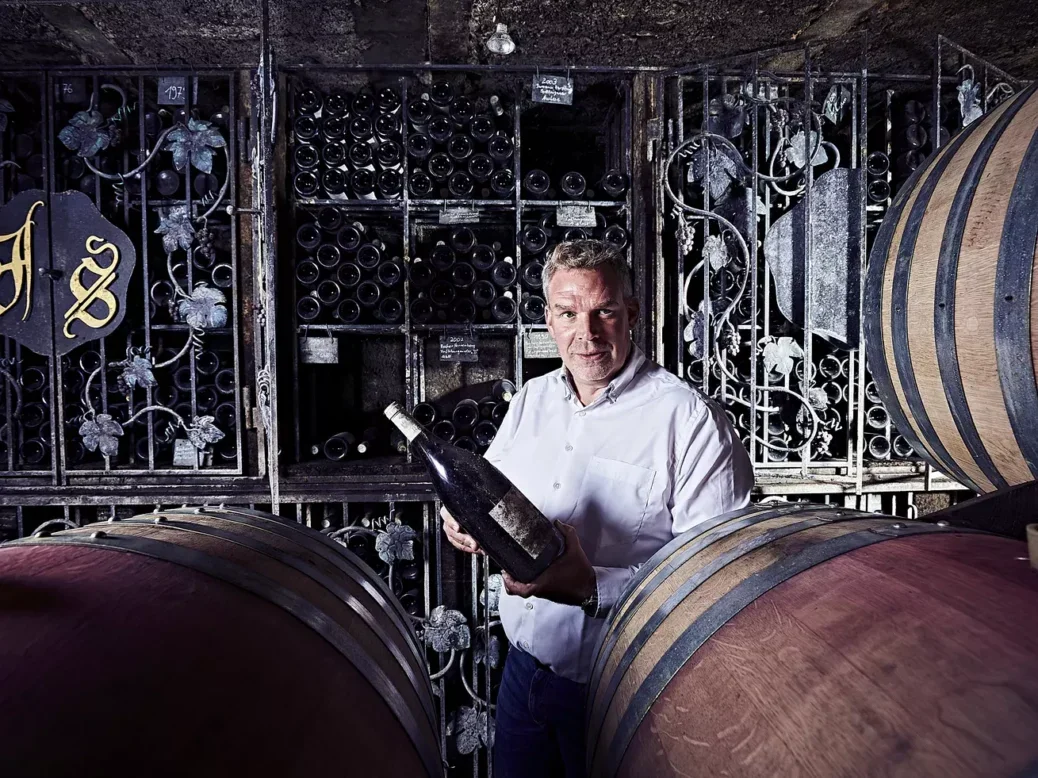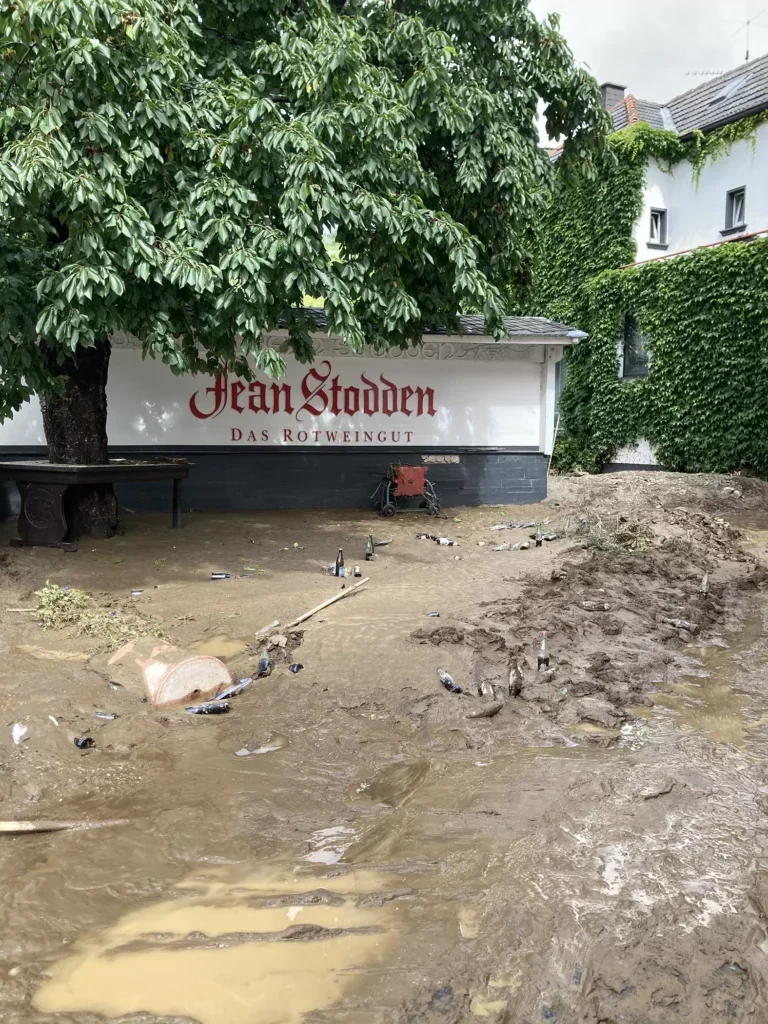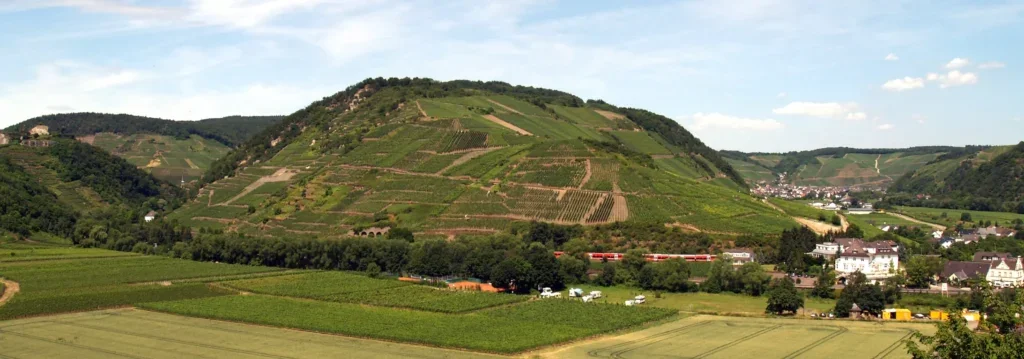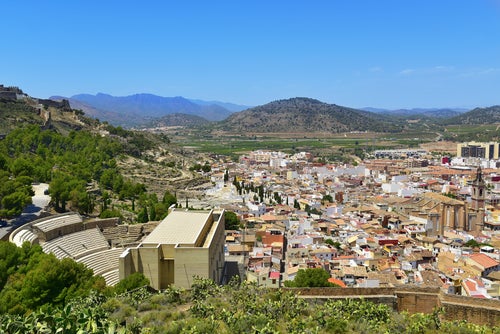
The acclaimed German Pinot Noir producer Jean Stodden was badly hit by the floods that swept through the Ahr Valley in summer 2021. Sarah Marsh MW meets fifth-generation winemaker Alexander Stodden to find out how the estate recovered from a natural disaster that threatened its very existence.
On the night of July 15, 2021, the Ahr valley in Germany was struck by a torrential downpour that flooded the valley and swamped the wine cellars. Images of the devastated valley, widely broadcasted via the media, were accompanied by requests to support the beleaguered wine producers who had watched as their livelihoods had been washed away.
But now, 18 months later what is the aftermath? How did the vintners cope? And what was salvaged?
I caught up with Alexander Stodden, the fifth generation at Jean Stodden estate, to hear his recollections and to taste the wines rescued from his flooded cellar.
“At 9.30 in the evening the water was running over the street,” Stodden recalls. “Firemen told us to move to somewhere safer, but within five minutes the water turned into a river. The whole cellar was underwater. It was 1.7m [5ft 6 inches] deep. All but three producers in the valley were affected, about 50, as well as the co-operatives.”
The vines which cloak the sleep slopes of the valley were unscathed, but the vineyards on the flat were decimated. Although Stodden’s vines are largely on the slopes, he lost 2ha (4.9 acres) of vines. In total, 50ha (124 acres) were wiped out in the valley, and any vines touched by floodwater could not be harvested since no one knew what the water contained. Stodden has not yet replanted his two hectares, and it seems he will permanently lose a hectare to accommodate the new course of the river.
He doesn’t attribute the flood to climate change. “A flood happens about every 100 years. The last time the River Ahr flooded was in 1901, but the valley was not so crowded then. Climate change is still going in the right direction for us. We have warmer seasons and it’s easier to ripen the fruit. My dad had to deal with frosts. I have to deal with dryness.”
Awash with water
Stodden’s winery was awash with water. The barrels of 2020 wine were floating among the debris, their chalk markings washed away. There was no way to accurately identify them. Even the cellar log, which might have helped locate the barrels, was kept in the cellar and ruined. “All I could concentrate on was pumping out the cellar. I couldn’t focus on the wine. I needed a nose. It needed to be a person who was not affected by the flood.”
He asked Hans Oliver to help. Stodden and Oliver set to work checking every barrel, discarding any which were not fully watertight. The remainder were divided into two categories—good and better. “It was the first blind tasting I have done in my life,” he says ruefully. These became two cuvées. The good barrels were bottled under the label Pengel 735 and the best barrels became Alexander Die Grossen.
Additionally Hans Oliver identified a number of barrels which had a distinctive character and fitted somewhere between the good and the best. This became the bottling labelled “Rescued by H.O.”

It’s likely that the wine labelled Alexander die Grossen is formed largely of Herrenberg, but of course other vineyards may well be included. Stodden has three Grosses Gewächs vineyards. Herrenberg, Hardtberg, and Sonnenberg.
Herrenberg is the largest of his vineyards, accounting for 6ha (14.8 acres) of his 10ha (24.7 acres). The heart of the vineyard is on the thinnest soil with vines around 45 years old, although the oldest are 100 years old. The younger vines on more fertile soil are separated and labelled “Recher.”
Stodden tells me Hardtberg has quite similar soils to Herrenberg “poor and mineral” but the vines are about 20 years old. Sonnenberg, on the other hand, lies on a warm south-facing slope and produces the most full-bodied wines. Stodden describes the soil as sandy loess and the richest soil they have at the estate. There is a dry wind which carries over the hill so there is never a problem of disease. Stodden brought this established vineyard when he was twenty-one and and the vines are now 50 years old or so.
Jean Stodden 2020 wines
Jean Stodden Spätburgunder Pegel 735 2020
Upright fruity aroma. Red cherry blends with rose petal florals. This is lightish-bodied and bright. Slight rustic tannin, but very pleasant. 88 2023-26
Jean Stodden Spätburgunder, Rescued by H.O. 2020
Arresting herby aroma with notes of catmint and lemon balm. Here the texture is finer and slightly crunchy. Lively acidity, red fruit, and plenty of energy. Sappy to finish. 92 2023-28
Jean Stodden Spätburgunder Alexander die Grossen 2020
Deep and rich with earthy woodland combined with some bay leaf aromas. More sophisticated on the palate. Combines vigour with power. Darker concentrated fruit. Punches into the finish. 94 2025-35
It seems to me that Alexander Stodden wrestled a vinous victory from the jaws of disaster with three accomplished wines, although he does not seem as content with them as you might imagine given the circumstances.
Jean Stodden: Bold, structured Spätburgunder
I wanted to know more about this resilient winemaker and his wines. Jean Stodden has a reputation for bold, structured Spätburgunder with the potential to age. I wondered how Alexander Stodden’s style and approach have evolved and ultimately how the catastrophic events of July 2021 have affected him. Alexander obligingly provide me with a six-vintage vertical of Herrenberg to taste while we discussed this.
He started working in the winery in 2001 and was making the winemaking decisions in the cellar from the 2007 vintage. However, his first solo vintage was not until 2013. “My dad had a line of tannin. The wines were very closed and stiff. I wanted to open them up without taking away the potential to age. I wanted them to be more drinkable at the start of their life.” He does this by working quite oxidatively during the fermentation.
For the past 12 years he has been using a rack, splash, and return during fermentation, introducing plenty of oxygen. “I want to focus on the fruit and to soften the tannins.”
To begin with, however, he works reductively under CO2 for a preferment maceration. “I like to keep the dark red color so I protect the grapes during the cold soak with dry ice.”
He adapts the time in vat from vintage to vintage of course, with 12 days for the warmest vintage and 24 for the coolest. He uses more new oak on hot vintages and it’s all Allier from François Frères.
During the aging in barrel he racks every three months, which is pretty unusual, continuing his more oxidative approach during élevage to make the wines softer and rounder. He blends the barrels every time he racks. “Allowing the barrels to meet every three months makes the final wine more immediately harmonious.”
He likes about 18 months of barrel age, but with the 2020 this wasn’t possible. As soon as the barrels had been assessed they were pumped into three different tanks and bottled before the harvest. “I don’t like to bottle so fast, but I had no choice. I think the longer barrel ageing brings a lot to the wines and short aging is not something I want to do again.” This seems to account for his subdued enthusiasm for his 2020s.
Stodden had no insurance to support his business with this kind of disaster and tells me the financial cost of the flood ran to €1.8 million. However, the appeal for aid was successful. “Society is not as bad as we think. So many people stepped forward to help. All kinds of people from different social backgrounds. In a crisis people help.”
From the disaster it seems Stodden has discovered a renewed faith in humanity.
Jean Stodden current releases
The 2020s are not bound by the GG embargo on release and were released last summer. The current releases of the three Grosses Gewächs vineyards are 2018 Hardtberg and 2018 Neuenahrer Sonnenberg, and 2019 Herrenberg which is included in the tasting notes of the vertical.
Jean Stodden Hardtberg Spätburgunder Grosses Gewachs 2018
Similar soil and aspect to Herrenberg, but younger vines. Wild flowers with a herbal, garrigue character. Forward and juicy on the attack while the mid palate is quite dense and a touch burly with some grip to the tannin. Dark fruit, tar and liquorice notes combine and I like the underlying freshness. Quite grippy. 92 2023-30
Jean Stodden Neuenahrer Sonnenberg Spätburgunder Grosses Gewachs 2018
Forward wine with juicy succulence and juiciness. Dances onto the palate. The rich but pure red fruit is streamed with warm minerality and bright acidity. I expected this to be heavier, but it’s energetic, sapid and vibrant to finish. 92/3 2023-30.
Jean Stodden Herrenberg Spätburgunder Grosses Gewächs: A vertical

Stodden compares the 2020, 2016, and 2018 as warmer vintages with 2018 being the hottest. “The 2018 vintage was hot and made mouthfilling wines.” Stodden says the 2020 is more like 2016 and 2012.
The cooler vintages of 2015, 2017, and 2019 he describes as the “real Pinot-style vintages which have nice acidity and tannins with grab.”
(Incidentally in 2021 a fine September finished off the season nicely and the 2021 has lower alcohol than the previous three vintages, together with fresh acidity).
Tasting through the wines it’s not hard to see the link between 2018, 2016, and 2012. They are beefier and I find the tannins thicker and grippier. Maybe the slightly higher percentage of new oak from François Frères (which is quite assertive) serves to emphasise this impression.
I prefer the cooler vintages. They feel more sophisticated. There is a correlation between 2019, 2017, and 2015, although the 2017 is straighter and a little longer than 2019 and the texture is silkier. 2015 is a delight. It has filigree delicacy and precision. The 2017 and 2015 were my favourites in the flight.
Jean Stodden Herrenberg Spätburgunder Grosses Gewachs 2019
A mid-September start to harvest after a warm summer with only a few hot days, cool nights and sufficient rain. “My grandmother used to say that good rain is a part of good weather,” Stodden says. Smoothly unfurling across the palate, this has a chamois leather texture and intensity. Vivid fruit with polished minerals. Neatly layered. Lithe muscle. It stretches out to a bright, quite piquant, fine, and well-sustained finish. 94/5 2026-30+
Jean Stodden Herrenberg Spätburgunder Grosses Gewachs 2018
This was a very hot year with harvest commencing in late August and finishing by September 20. Stodden wanted moderate alcohol so harvested early so the wines range from 12.5%-13.5%. He says he learnt from 2003 when some reached 15.5%. There was a little sunburn in certain spots which are prone to his UVA. Stodden decreased the vatting time, but used more new oak, 40%. Black plum and five spice on the nose, clearly a rich aroma. It is slightly burly with more matter and savory-meaty grip. The tannins are a tad (it’s all relative) more robust and thicker. I like the liquorice notes. Stodden has retained good freshness. It is both quite compact and energetic and fresh, all of which serve to balance the dark fruit. Maybe not quite as long as 2019. 92 2025-30
Jean Stodden Herrenberg Spätburgunder Grosses Gewachs 2017
This is a medium to cooler season, most like the 2019, but not quite as warm. Harvested started from mid-September. It had 18 days vatting time and 30% new oak. Showing a little evolution on the nose with slightly animal aromas combining with fresh mulch. The palate has a summer berry sweetness, much more fruity than the nose, with a lighter-footed feel than 13.5% would suggest. The texture is satin smooth and the body lightly rounded. The finish has lively freshness and a light crunch of tannin. Lots of pep at the end. Good finish. This is really drinking well now, but no hurry at all. 94/5 2023-26
Jean Stodden Herrenberg Spätburgunder Grosses Gewachs 2016
“A warmer season, between 2017 and 2018,” says Stodden. The aroma is darker with a hint of black peppercorn and oregano. A fuller, softer, and meatier palate than 2017. It feels a bit heavier although the ABV is the same. It has a certain grunt. The tannins are lightly rustic and grip the finish, but this is balanced with sweetness of forest fruit. Some development evident in the white miso character. A little rough now, but I feel it will improve with more aging. 93 2024-28
Jean Stodden Herrenberg Spätburgunder Grosses Gewachs 2015
2015 is the coolest vintage in the flight. It was harvested from the end of September to end of October. This is a good deal more refined than 2016 and really stood out for its straight, flowing, and fluid palate laced with floral notes. It is slightly racy. The texture is fine and silky and the finish pure and fresh. Lovely crystalline finish. Very stylish. Drinking beautifully, but fragile. I find this delightful now and would capture the moment. It has a tantalizing translucency and a fine thread of minerality to finish. Love it, but would not keep it longer. 95 2023-24
Jean Stodden Herrenberg Spätburgunder Grosses Gewachs 2012
The summer was quite hot with a cooler later season and harvest. Rather plump and succulent aroma with sweet stable and manure. Hoofy. The palate is softly grainy and somewhat loose textured. It’s very inviting combining a hearty feel and a light bitter smoky tang, with the tannins adding to the freshness on the finish. Very expressive and drinking well now. Lacks a bit of layering mid-palate. It is not going to fall over immediately, but nor can I envisage it evolving beneficially. 92






